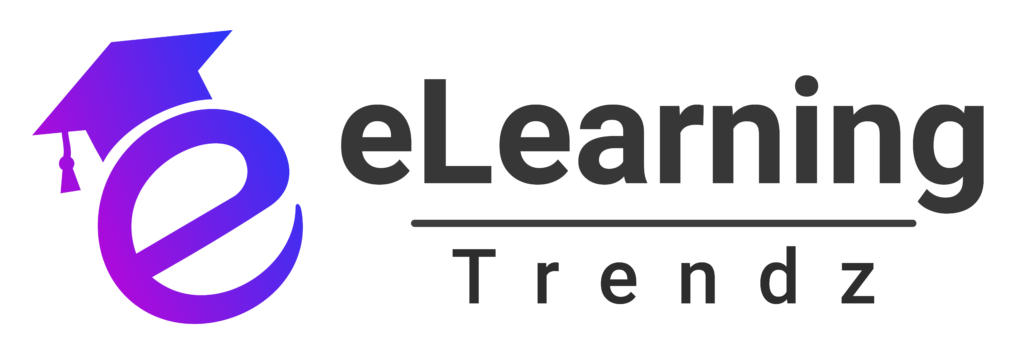In today’s fast-paced digital landscape, a robust Learning Management System (LMS) is essential for businesses, educational institutions, and organizations seeking to deliver effective training and eLearning. However, with the plethora of options available, selecting the right LMS can be overwhelming. This guide will walk you through the key considerations and steps to help you make an informed decision.
What is an LMS?
An LMS is a software platform that enables the creation, delivery, and management of online learning content. It’s designed to help organizations streamline their training programs, improve employee performance, and enhance learner engagement. It serves as a centralized hub where instructors, administrators, and learners interact to facilitate education and training.
Why Choosing the Right LMS Matters
The right LMS can significantly impact your learning and development initiatives. It ensures seamless content delivery, provides insightful analytics, and improves learner outcomes. On the other hand, a poorly chosen LMS can lead to frustration, wasted resources, and ineffective training. Additionally, the right LMS can support scalability, help in compliance with regulatory requirements, and foster a culture of continuous learning.
Key Features to Look For in an LMS
1. User-Friendly Interface
A good LMS should have an intuitive and easy-to-navigate interface for both administrators and learners. A complicated system can deter users and hinder the learning process. Ensure the dashboard provides quick access to courses, reports, and other essential functions.
2. Customization Options
Customization allows you to tailor the platform to your specific needs. Look for an LMS that offers customizable branding, dashboards, learning paths, and certificates. The ability to create bespoke training modules will enhance the relevance and effectiveness of your courses.
3. Mobile Compatibility
With the increasing use of smartphones, a mobile-friendly LMS is crucial. It ensures learners can access content anytime, anywhere. Look for features such as offline learning capabilities, mobile apps, and responsive design to enhance accessibility.
4. Integration Capabilities
An LMS should seamlessly integrate with your existing tools, such as HR software, CRM, or video conferencing platforms, to enhance efficiency. Popular integrations include Microsoft Teams, Zoom, and third-party content libraries like SCORM or xAPI.
5. Reporting and Analytics
Robust reporting features provide insights into learner progress, course effectiveness, and areas for improvement. Advanced LMS platforms offer dashboards with visual data representations, such as graphs and heatmaps, to help track engagement and performance.
6. Scalability
As your organization grows, so will your training needs. Ensure the LMS can scale to accommodate future requirements, including increased user capacity, advanced features, and multi-language support.
7. Security Features
Data security is paramount. Look for an LMS with strong security measures, including encryption, compliance with data protection regulations, and user access controls. Ensure the platform supports single sign-on (SSO) and multi-factor authentication (MFA) for added security.
8. Gamification and Engagement Tools
Features like badges, leaderboards, and rewards can significantly enhance learner engagement. Gamification motivates learners by adding a fun, competitive element to the training experience.
9. Content Management and Compatibility
Ensure the LMS supports various content formats, including videos, PDFs, interactive quizzes, and simulations. Compatibility with eLearning standards like SCORM, AICC, and xAPI ensures smooth course import and export.
10. Multilingual Support
If your organization operates globally, multilingual support is essential. The ability to deliver content in multiple languages ensures inclusivity and broadens your training reach.
Steps to Choose the Right LMS
Step 1: Identify Your Needs and Goals
Before exploring LMS options, outline your specific goals. Ask yourself:
- What type of training will be delivered?
- Who is the target audience (employees, students, customers)?
- What features are essential for achieving your objectives?
- How will you measure the success of your LMS implementation?
Step 2: Set a Budget
LMS platforms come in various pricing models, such as subscription-based, pay-per-user, or one-time fees. Establish a budget that aligns with your financial resources and anticipated ROI. Factor in hidden costs like implementation, training, and ongoing maintenance.
Step 3: Evaluate Vendors
Conduct thorough research on potential LMS vendors. Read reviews, request demos, and compare their features, customer support, and reputation in the industry. Look for case studies and testimonials to understand how the LMS has benefitted other organizations in your sector.
Step 4: Test the Platform
Take advantage of free trials to test the LMS’s usability, features, and performance. Involve end-users in the evaluation process to gather valuable feedback. Test critical aspects like course creation, user management, and reporting during the trial phase.
Step 5: Assess Technical Support and Training
Reliable technical support is essential for a smooth LMS experience. Ensure the vendor provides adequate training, comprehensive documentation, and ongoing support to help your team utilize the platform effectively. Check for available support channels, such as live chat, email, or phone.
Step 6: Check for Compliance and Certification
If your industry has specific compliance requirements, such as GDPR, HIPAA, or ISO 27001, make sure the LMS adheres to these standards. Compliance ensures that your data is handled securely and reduces the risk of legal complications.
Step 7: Plan for Implementation
Develop a clear implementation plan, including timeline, training schedule, and resource allocation. Assign a project manager to oversee the deployment and ensure all stakeholders are aligned.
Common Mistakes to Avoid When Choosing an LMS
1. Focusing Solely on Cost
While budget is important, prioritizing cost over features and functionality can lead to long-term challenges. A cheaper LMS may lack essential features, resulting in higher costs for add-ons or replacements later.
2. Ignoring User Feedback
The LMS must cater to both administrators and learners. Ignoring their needs and feedback can result in poor adoption rates. Conduct surveys and usability tests to ensure the platform meets user expectations.
3. Overlooking Scalability
Selecting an LMS that cannot grow with your organization’s needs will require switching platforms later, leading to additional costs and disruptions.
4. Failing to Plan for Implementation
A lack of clear implementation and onboarding plan can cause delays, confusion, and reduced user engagement.
Top LMS Options in the Market
- Paradiso LMS: A feature-rich platform offering advanced customization, mobile compatibility, and seamless integrations. Ideal for businesses and educational institutions looking for a scalable solution.
- Moodle: An open-source LMS known for its flexibility and community-driven support. Moodle is an excellent choice for organizations with technical expertise and a need for extensive customization.
- TalentLMS: A user-friendly platform ideal for small to mid-sized organizations. It offers an intuitive interface, gamification, and robust reporting tools.
- Blackboard: A popular choice in the education sector, offering robust analytics and collaboration tools. Blackboard is well-suited for institutions seeking an LMS with a strong focus on academic learning.
- SAP Litmos: A cloud-based LMS with strong compliance and reporting features. SAP Litmos is perfect for businesses that prioritize data security and seamless integrations.
- Canvas: Canvas is widely used in higher education, known for its modern interface and powerful assessment tools. It’s a great option for institutions aiming to foster collaboration and innovation.
Final Thoughts
Choosing the right LMS is a critical decision that can shape your organization’s learning culture and success. By carefully evaluating your needs, researching vendors, and testing platforms, you can find an LMS that aligns with your goals and delivers exceptional results. Remember, the right LMS should not only meet your current requirements but also adapt to your future growth and technological advancements.
Ready to explore the best LMS for your organization? Start by identifying your needs and requesting demos from leading vendors. Make your eLearning journey seamless and impactful today!









